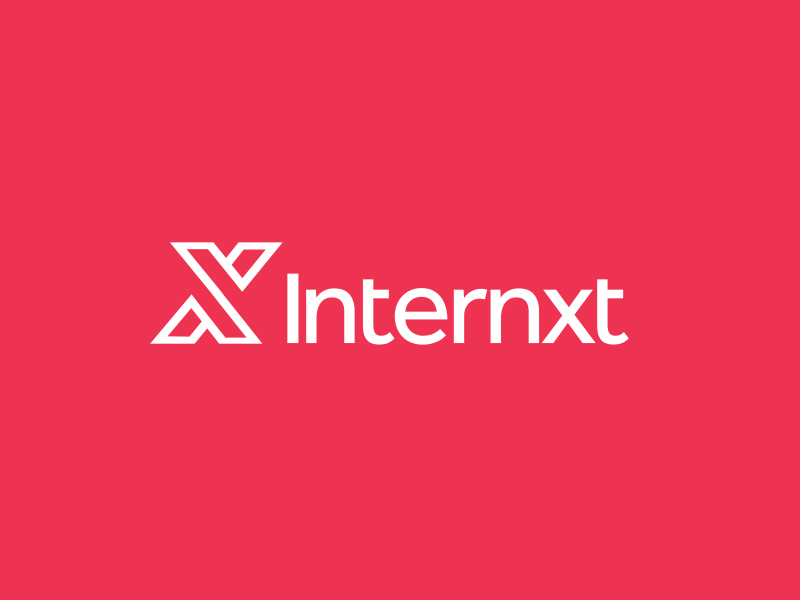The top photo-sharing and storage websites are essential since they give you room for the numerous photos you take. These days, photo file sizes can be significant: RAW files can be up to 95MB, while JPEGs from the top cameras can be as large as 15-20MB! That will quickly take up a hard drive. Even with one of the best camera phones, the number of pictures many people shoot can quickly fill a lot of storage space.
Beyond size, there is also safety to think about. The best photo sharing and storage services will keep your photos in the cloud, saving you the grief of losing a hard drive, laptop, or phone to a fire, theft, or malfunction.
Additionally, these websites help you keep track of the pictures you take. Since they are cloud-based, you may access them from any location with an internet connection. Many have superb tagging systems that make them useful for quickly finding a photo. They work well for sharing images with loved ones and friends, and many of them come with powerful editing features already included. While some cater more to professionals, others offer free service tiers.
What are Image Hosting Sites?
Online services known as picture hosting sites allow users to upload and save images. These platforms offer distinctive URLs for every image posted, making it simple to distribute or embed images on web pages, forums, and social media. They provide a practical way to distribute photographs, conserve storage space, and improve website performance. However, using these websites can result in some content control loss and image quality reductions.
Pros and Cons:
Pros:
- Comfortable Sharing: If you want to distribute photographs to friends, embed them on websites, or post them on social media, image hosting companies offer a simple and practical way.
- Storage Room: You can offload the storing of images from your own devices or website servers by using image hosting websites. This can be extremely useful if you have little storage space.
- Savings in bandwidth: Because the image files are provided from the hosting site’s servers rather than your own, you save bandwidth when you embed photos from hosting sites on your website.
- Embedding: For simple image embedding into webpages, forums, and other online platforms, many image hosting websites offer HTML or BBCode.
- Redundancy and backup: Your photographs can be backed up on image hosting websites, lowering the chance of losing them if your local storage fails.
- Performance: To guarantee quick load times and improved performance when visitors access your photographs, certain image-hosting websites use content delivery networks (CDNs).
- Privacy Alternatives: Most websites that contain photographs have privacy options that let you choose who can see your images. Images can be shared openly, kept private, or only certain people have direct links to them.
Cons:
- Control and ownership: You might cede some control over your content when you upload photographs to a hosting website. For more information on how the platform may use your photographs, read the terms of service.
- Picture caliber: Your photographs might be compressed by some image hosting websites to conserve storage space, which could harm the quality of the images. If you want to display high-resolution photographs, this can be a problem.
- Reliability: The uptime and dependability of the hosting site affect your capacity to view hosted images. Accessing and sharing your photographs may be impacted if the hosting website goes offline or shuts down.
- URLs are lost: With backup links or copies, you’re careful when storing the URLs of your hosted photographs, and you can retain access to them.
Features:
- Users can upload photographs from their devices or URLs; these services frequently support different image formats.
- An individual URL is given to each uploaded image, making sharing and embedding simple.
- Platforms offer HTML or BBCode to embed photos in webpages, forums, and blogs.
- Images can be made public, private, or only available via direct links by users.
- Several websites let users group photographs into albums or galleries for easier management.
- Users frequently have profiles where they can display their galleries and submitted photos.
- Sharing content via social media, email, and direct links is frequently encouraged.
- Users and visitors can interact with the photographs by leaving comments.
Best Free Image Hosting Websites
Without leaving your website, you may organize your photographs into folders, add tags, and make other changes. What are the top image hosting websites, then? We have already searched for you, so you don’t need to. The top 10 photographic hosting websites are listed below.
1. Google Photos:
One of the best photo storing applications available is Google Photos. It might have won the top photo-sharing and storing site just a few years ago. But that was when it provided limitless high-resolution cloud storage.
Despite eliminating that benefit, it is still a fantastic site for preserving and sharing photographs. The Photos app is straightforward and intelligent, much like everything else from Google. Drag and drop pictures into place, or use the Google Drive cloud storage app or the camera roll on your phone to set up automatic photo backup. A clever time-saver is Google’s AI integration. Finding pictures of particular subjects and comparable pictures is made simple. Photos can also be shared with other Google Photo users in addition to the usual methods, which is great if your family and friends are all Google users. Basic editing and filtering features are also provided.
It needs to be more complex for semi- and professional photographers. However, it is sufficient for fast modifications like a crop or a minor lighting adjustment.
You can choose between original quality and Storage saver size while uploading media. This lowers image quality but prevents you from quickly using up the 15GB of (honestly ungenerous) free storage.
2. 500px:
Professional photographers and serious shutterbugs can store and share their photos on 500px. It’s simple to upload your images to the platform. The same goes for categorization choices, which enable simple privacy settings, location addition, keyword addition, and photo transfer to your 500px Portfolio.
If you edit outside the site (like revealing life’s icy, unvarnished truths), the lack of features may not be harmful. If you require speedy retouching and improvements, there is an AI add-on.
You can post seven photographs weekly on the free plan, only JPGs. Unlimited uploads are available with the Awesome and Pro memberships and valuable extras like offline viewing and analytics to know who is watching your work. Making a portfolio website is also possible with the Pro subscription’s top tier.
3. Amazon Photos:
A decent Google Photos substitute is Amazon Photos. Even if free storage is far less, the overall experience and tiered subscription scheme are identical. Even the same essential editing tools, which could be improved, are available.
Like its cloud photo storage competition, Amazon Photos lets you privately share your photos with loved ones who also use the service. Other places only offer the ability to create links, send photographs, or share content via Facebook. However, you can share them with other Amazon devices like the Fire TV and Echo Show. Anyone can purchase an Amazon Photos subscription, which provides storage ranging from 100GB to 30. However, the pricing differs from Google Photos until you sign up for Amazon Prime.
Unlimited full-resolution photo storage is available to Prime subscribers. Additionally to all the other Prime advantages, such as free shipping and movie streaming. That’s far less expensive than signing up for comparable plans on Amazon Photos alone, but Amazon purposefully made it that way to increase the number of Prime subscribers.
Amazon Photos provides scant cloud storage for films, which is a drawback. For instance, the 100GB package limits you to 14 hours of video. You can only upload 5GB of video, even with a Prime subscription.
4. Dropbox:
Photographers have traditionally favored Dropbox as a place to save their images. Yes, it is a typical cloud storage service containing nearly any information. Support for RAW files is part of that. Photos must maintain their original, uncompressed quality.
The platform is user-friendly. The folder method for organizing files was simple and clear to us. Dropbox’s availability, including photo storage apps for Android and iOS, is something we particularly enjoyed. Of course, Dropbox encrypts your files with 256-bit AES and SSL/TLS.
Users who sign up for a Dropbox Basic account get 2GB of free storage, which is a little, but the service’s subscription costs make it unaffordable for photographers on a tight budget.
You can obtain a remote desktop wipe, a 30-day version history, a folder, account restoration (pick a specific time), and more features for $11.99 / £9.99 for a single user. When files are mistakenly destroyed or your device crashes, this is useful in the worst-case scenario.
We discovered that Dropbox excels at simplicity, has an excellent user experience, and has speedy sync speeds. Many connectors are tailored to pictures, from Facebook photos and video uploads to Adobe Creative Cloud. The fact that it can save RAW files makes it even better.
5. Apple iCloud:
If you’re using an iOS device, iCloud might be your best option for online photo storage. It is the iPhone manufacturer’s walled garden-style cloud storage service for images and other files. There is a PC application for organizing images, but there is none for Android users.
Using iCloud is straightforward. Even sleek. Just as you could anticipate from a business that takes pleasure in its aesthetic expression, originality, and user-friendly design, with other iCloud users, sharing images and making albums is equally straightforward.
User storage is limited to 5GB for free. That’s hardly much, and upgrading your space will require a subscription.
Only three iCloud+ monthly subscriptions are available: 50GB, 200GB, and 2TB. And that applies to all your cloud-stored assets, not just your images. In contrast to popular photo storage programs like Google and Amazon Photos, the pricing ranges from $0.79 (£0.99) to $9.99 (£6.99) and offers a respectable value.
6. SmugMug:
SmugMug is a fantastic photo-sharing and storage service with four membership plans for consumer, corporate, and professional users. Depending on your plan, SmugMug is either one of the most significant websites for sharing and storing photos or for creating websites for online picture portfolios. It is “easy to use photo cloud storage with a professional twist,” as we noted in our hands-on assessment.
The platform’s Basic membership allows you to post infinite full-resolution images if you only need a location to keep priceless memories. Serious photographers can subscribe to higher-tier plans for features like customized websites, sales & marketing tools, and personalized URLs. Storage and management of RAW files are also supported.
You’ll find the photo storage software to be simple to use in either case. It would help if you first created your gallery homepage—don’t worry, you may have more than one.
You have complete control over appearance, visibility, and access during setup; you can lock it down or allow others to upload to your galleries. Shopping cart options are also added by artists who sell their creations.
7. ImageShack:
Given that it offers “limitless total uploads and space” to all customers, ImageShack is a fantastic platform for individuals with substantial photo libraries.
That’s a significant offer compared to other platforms competing for the top photo storage and sharing site title.
It’s simple enough to use the app for photo storage. Although it doesn’t have the polish of Google and Adobe, and in many places, it looks and feels archaic, its performance is excellent.
The ability to rapidly generate direct links and embed codes for photographs is highly convenient. Regardless of the original resolution, you can utilize a dropdown to choose a specific size, from full-screen to thumbnail.
A community of photographers may also be found on ImageShack. This social media component lets you ‘follow’ and like and share the work of your favorite artists. Other professional-level features, such as statistics and watermarking, are restricted to subscription-only users.
But if everyone has infinite space, what good are subscription tiers? The most significant benefit is greater bandwidth for Pro and Premium users, which is perfect if you’re a power user or a business regularly uploading many photographs. For everyone else, the fundamental strategy should be adequate.
8. Internxt:
Consider Internxt an excellent cloud storage option because of its reasonable pricing options, user-friendly interface, and dependable support. The cloud service provider’s excellent security features and dedication to privacy will appeal to individual users and enterprises who emphasize security, even though it does not offer the same advanced features as Dropbox and OneDrive.
The basic free plan from Internxt gives 10GB of storage, although the word “up to” is heavily used. All accounts come with a 2GB allowance. However, additional storage can be acquired at no additional cost by carrying out specified tasks, including downloading the company’s app, signing up for its newsletter, and referring friends. Beyond that, both individuals and organizations can choose from seven further pricing tiers.
We give Internxt good marks for its variety of practical features, such as its intuitive user interface, the option to backup folders to another location on your computer, and the free out-of-plan virus and password utilities.
9. Flickr:
Without a doubt, Flickr is the best website for sharing and storing photos. With good reason, the platform has long been a favorite among photographers.
Flickr is delightfully easy to use. The website is simple, easy to use, and tidy, from uploading photos to organizing albums. The apps for Android and iOS are the same. There is none of the cumbersome image management trouble that you get with less-than-stellar cloud storage for photos here. As a result, both ardent amateurs and experienced photographers can use Flickr as a cloud storage platform for their photos.
Sharing photographs is also simple. The standard share button makes the regular embed codes, links, and social networks available. Similar to how you can tag people in a Facebook photo, you can also add other Flickr members to images.
That fits with the welcoming community vibe of Flickr. This is more than just a website for sharing and storing private photos. It’s a social platform where photographers may follow one another and browse public photostreams that resemble online portfolios. You may even keep track of viewing statistics.
But if you’re feeling camera-shy, you’re not required to participate. The images and videos that you upload are entirely under your control. The Camera Roll makes moving photographs simple and changes their visibility, licensing rights, tags, and safety level with convenient dropdown menus and keyboard shortcuts. Be cautious when deciding on safety levels because only subscribers may upload explicit or NSFW artwork.
10. Adobe Portfolio:
Particularly if you want to highlight your work, Adobe Portfolio is the best option for cloud storage for photos. You can create portfolio websites using the photo storage platform. It has a user-friendly interface for constructing online galleries similar to Wix for photographers. Providing you have a Creative Cloud subscription, of course.
It’s not free, perhaps Portfolio’s most significant drawback (although you can “build” your site for free to get a sense of how it works). To use Portfolio’s infinite pages and hosting features, you must be an Adobe Creative Cloud subscriber.
The app’s seamless integration with other Adobe tools, including Photoshop, Lightroom, and Behance, is Portfolio’s strongest suit. It makes sense if you already subscribe or intend to do so.
Plans for Creative Cloud Photography, which include Portfolio, Adobe Lightroom, and Photoshop, range in size from 20GB to 1TB and cost about $11 / £10 / AU$15 per month when paid annually.
Conclusion:
In essence, picture-hosting websites act as online image repositories by providing users with a simple means of uploading, storing, and sharing their visual information. These solutions enable seamless image distribution across numerous internet platforms with features like distinctive URLs, embedding options, and privacy settings. They facilitate picture management by offering alternatives for planning, communication, and even simple modification. However, consumers need to be aware of potential compromises, such as varied levels of content management, potential quality changes, and privacy issues. Ultimately, picture-hosting websites offer a valuable remedy for enhancing image accessibility, sharing, and storage in the digital environment.
FAQs:
Can I include photographs from these websites on my website?
Yes, most picture hosting providers offer HTML or BBCode, which makes it simple to include images in websites, blogs, forums, and other online spaces.
Do my photographs have privacy settings?
Many sites provide privacy settings that let you choose whether to make photographs public, private, or only available through direct links.
Websites that host photos compress the images?
To reduce storage space, some platforms may compress photos, which may impact the quality of the images. For details about compression, consult the terms or platform settings.
Are the websites that host my photographs secure?
Reputable picture hosting providers give data security and privacy a top priority. Select well-known platforms and carefully review their terms of service.
Can I create albums using my photos?
Many sites have tools for building albums or galleries for better image management.
Do both free and paid choices?
Most image hosting sites may provide free plans with constrained functionality and offer premium plans with more features, storage, and ad-free access.
Can you monitor how many people visit my images?
Analytics that offers information on image views, interactions, and engagement are available with some premium services.



















